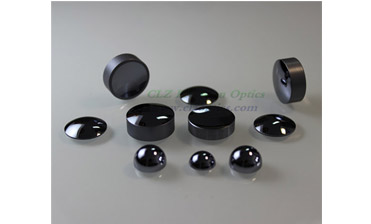What is the Difference Between Spherical Lens and Aspheric Lens?
As a Spherical Lenses Manufacturer, share with you.
It is simple and relatively inexpensive to manufacture a lens whose surface is part of a plane or part of a sphere. Such a lens cannot focus light well; the lack of focus is spherical aberration.
Spherical aberration is particularly prominent in large, fast (bright) lenses. This lack of concentration is manifested in various forms of ambiguity. This problem can be corrected by placing other lenses in front of and behind the lens. It can also be corrected by changing the shape of the lens surface (making them aspherical), but this tends to be more difficult and expensive. The aspherical is not.
Custom Silicon Spherical Lenses
When other lens elements are added as corrections, they increase the amount of glare and reduce the contrast of the photo, and increase the size and weight of the lens. They may also change color slightly. Therefore, an aspheric element usually signals that the lens is finished to produce a contrasting color image, and is lighter in weight and easier to use. They cannot guarantee high quality by themselves, because the lens may show other problems besides spherical aberration. For example, small aspheric lenses can be made of plastic, and are often found in inexpensive photographic equipment. However, the production cost of large glass aspheric lenses is much higher, and they are usually only used for better lenses.
Silicon (Si) single crystal is a chemically inert material with high hardness and insoluble in water. It has good light transmission performance in the 1.2-7um waveband, and it also has good light transmission performance in the far-infrared waveband 30-300μm, which is a feature that other infrared materials do not have. Silicon (Si) single crystals are commonly used as substrates for 3-5μm mid-wave infrared optical windows and optical filters. Because of its good thermal conductivity and low density, this material is often used in the production of laser mirrors and in situations that are sensitive to volume and weight. The silicon lens or window produced by our company uses optical-grade silicon single crystal, the diameter range is: 5~260mm, the surface accuracy can usually reach 40/20, and the surface flatness can reach: λ/10@633nm (the thickness of the lens is The ratio of diameters must be consistent with the processing ratio).
Our company also has Custom Silicon Spherical Lenses on sale, welcome to contact us.
a

评论
发表评论